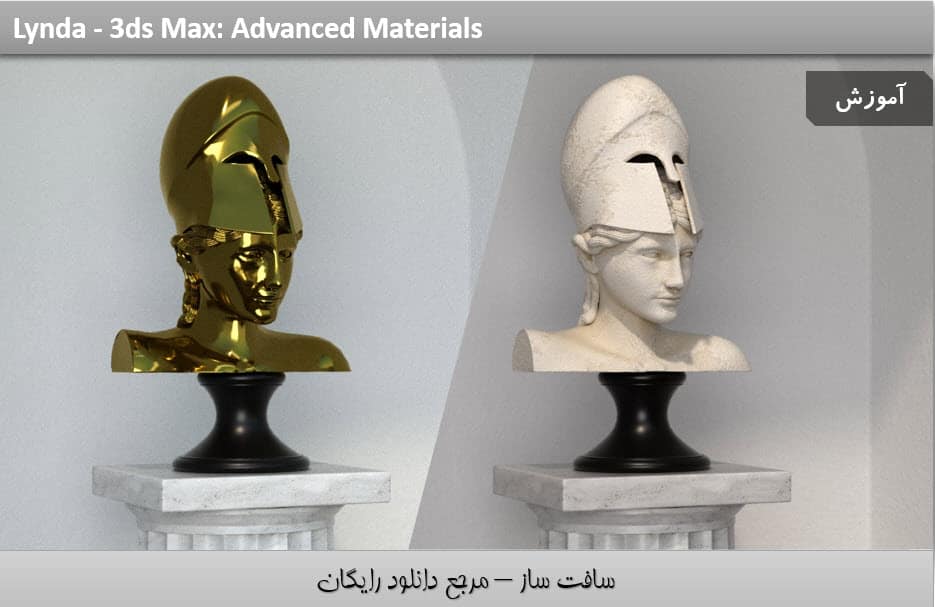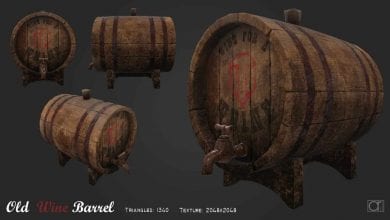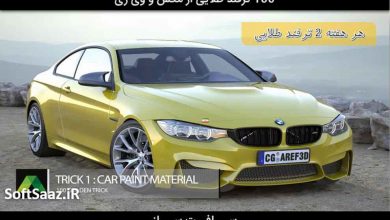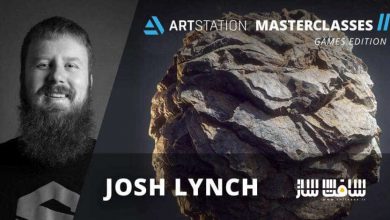آموزش متریال پیشرفته در مکس 3ds Max
Lynda – 3ds Max: Advanced Materials
آموزش متریال پیشرفته در مکس
در این دوره آموزشی ” آموزش متریال پیشرفته در مکس ” از سایت lynda ، مربی دوره Aaron F. Ross ، فوکوس و تمرکزش را روی تکینک های شیدینگ PBR می کند و استفاده از متریال فیزیکی برای رسیدن به سطوح واقعی نظیر سنگ و شیشه و فلز را بررسی می کند. با سافت ساز همراه باشید.
PBR رندر مبتنی بر فیزیک ، همانند نوری در دنیای واقعی کار می کند و با تلاش کمتر به نسبت رندر قدیمی به واقعیت می رسد.ایجاد شبکه های سایه ، ترکیب و تنظیم مپ ها در روش های جالب ، تولید نقشه های ambient occlusion و تبدیل آنها به نقشه های بیتی اپلیکیشن های کراس و رندرهای سازگار از جمله مواردی است که در این دوره آموزشی که در سافت ساز ارائه شده است ، خواهید آموخت.
عناوین دوره آموزش متریال پیشرفته در مکس :
- ورک فلوی ویرایشگر متریال
- مدیریت XREF و متریال ها
- Laying out یک صحنه برای تست متریال
- استفاده از متریال فیزیکی
- کنترل هایلایت ها با Roughness
- کار با reflection و refraction
- شبیه سازی ترانسلوسنسی و پراکندگی
- ساخت شبکه سایه
- ترکیب و تصحیح رنگ نقشه ها
- ایجاد نقشه انسداد محیط
- نقشه برداری با Substance
- استفاده از مپ های بامپ ، نرمال ، جابه جایی
- و …
پیش نمایش دوره آموزش متریال پیشرفته در مکس :
عنوان دوره : Lynda – 3ds Max: Advanced Materials
سطح : متوسط
زمان کل دوره : 2.34 ساعت
تعداد فایل های تصویری : 34
سال آموزش : 2016
فایل تمرینی : دارد
مربی دوره : Aaron F. Ross
نرم افزار : 3ds Max
زیرنویس : ندارد
Lynda – 3ds Max: Advanced Materials
Physically based rendering (PBR) simulates the way light works in the real world. It achieves greater realism with less effort than traditional 3D rendering. This course focuses on PBR shading techniques in 3ds Max, using the Physical Material to achieve photorealistic surfaces such as stone, glass, and metal. Author Aaron F. Ross also looks at building shading networks, and combining and adjusting maps in interesting ways. Procedural maps such as ambient occlusion and substance deserve special attention, and you’ll also see how to bake them out to bitmap files for cross-application and renderer compatibility. By the end of the course, you’ll have a firm foundation in advanced shading
Topics include:
- Streamlining material editor workflow
- Managing XREFs and materials
- Laying out a scene for material testing
- Using the Physical Material
- Controlling highlights with Roughness
- Directing reflections and refractions
- Simulating translucency and scattering
- Building a shading network
- Combining and color correcting maps
- Baking maps such as ambient occlusion
- Procedural mapping with Substance
- Using relief maps: bump, normal, and displacement
1. Material Editor Tips and Tricks
Using Preview windows 4m 41s
Setting Material Editor options 3m 21s
Creating multiple view tabs 2m 39s
Storing materials in sample slots 7m 15s
Layout and select commands 4m 23s
Understanding XREFs and materials 7m 36s
2. Hard Surface Materials
Rendering the Physical Material in ART 8m 17s
Balancing reflections with roughness 4m 19s
Adjusting metalness and reflection color 4m 2s
Using IOR to control reflectance 3m 18s
Setting a custom reflectance function 3m 19s
Stretching highlights with Anisotropy 1m 54s
Understanding the bump channel 2m 19s
Adding a clear coat 2m 57s
3. Ray-Tracing Techniques
Controlling physical transparency 6m 13s
Tinting with transparency depth 3m 13s
Backlighting with thin-walled translucency 2m 34s
Subsurface scattering for physical translucency 3m 20s
Light emission from a surface 2m 42s
4. Building Shading Networks
Future-proofing material presets 6m 28s
Layering and masking with a composite map 6m 11s
Color adjustment with a color correction map 5m 56s
Preparing for baking 3m 21s
Applying ambient occlusion 3m 56s
Baking maps with Render to Texture 6m 15s
RGB curves adjustment with an output map 7m 11s
5. Advanced Mapping
Mapping a gradient ramp 6m 38s
Procedural mapping with a substance map 6m 12s
Simulating relief detail with a normal bump map 5m 12s
Deforming surfaces with a displacement map 5m 22s
Combining maps with an RGB multiply map 7m 31s
دانلود با لینک مستقیم و سرعت بالا :
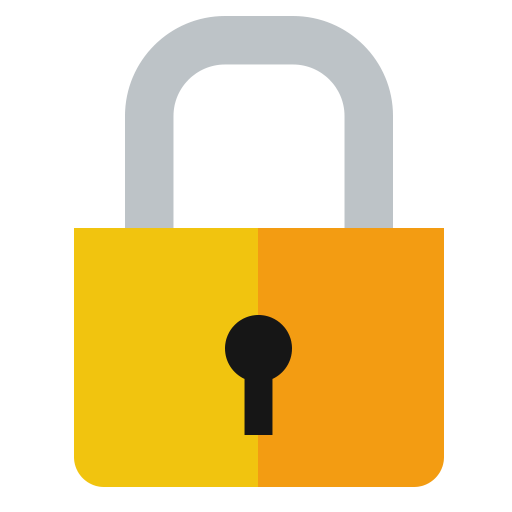
برای دسترسی به کل محتویات سایت عضو ویژه سایت شوید
برای نمایش این مطلب و دسترسی به هزاران مطالب آموزشی نسبت به تهیه اکانت ویژه از لینک زیر اقدام کنید .
دریافت اشتراک ویژه
مزیت های عضویت ویژه :
- دسترسی به همه مطالب سافت ساز
- آپدیت روزانه مطالب سایت از بهترین سایت های سی جی
- ورود نامحدود کاربران از هر دیوایسی
- دسترسی به آموزش نصب کامل پلاگین ها و نرم افزار ها
اگر در تهیه اشتراک ویژه مشکل دارید میتونید از این لینک راهنمایی تهیه اشتراک ویژه رو مطالعه کنید . لینک راهنما
For International user, You can also stay connected with online support. email : info@softsaaz.ir telegram : @SoftSaaz
امتیاز دهی به این مطلب :
امتیاز سافت ساز
لطفا به این مطلب امتیاز دهید ☺️

